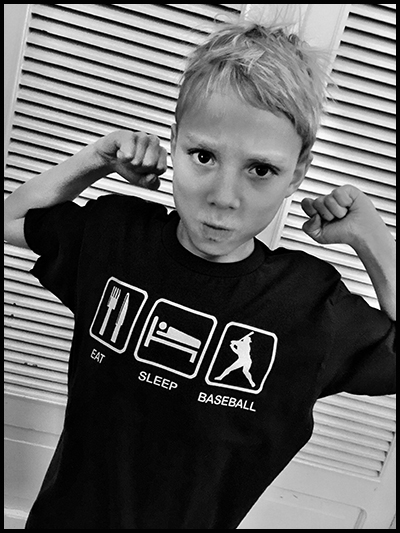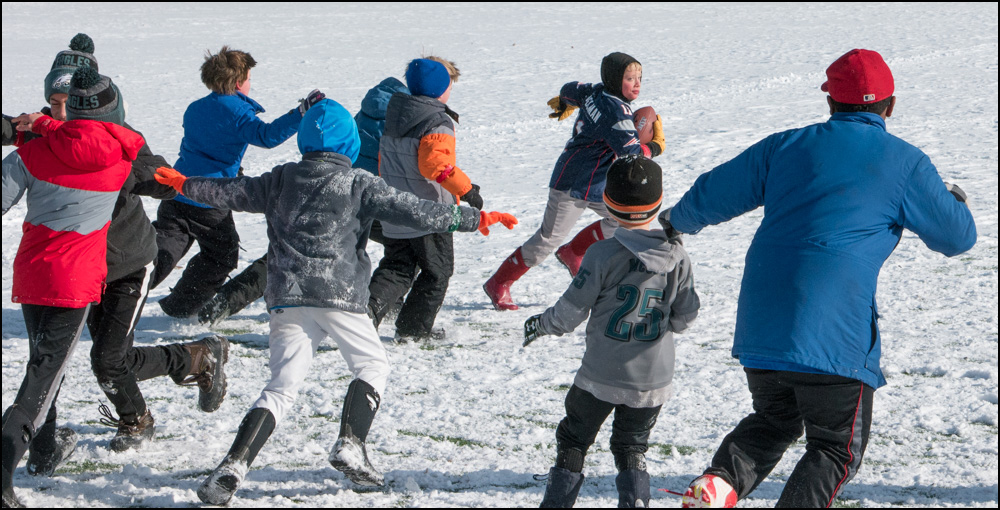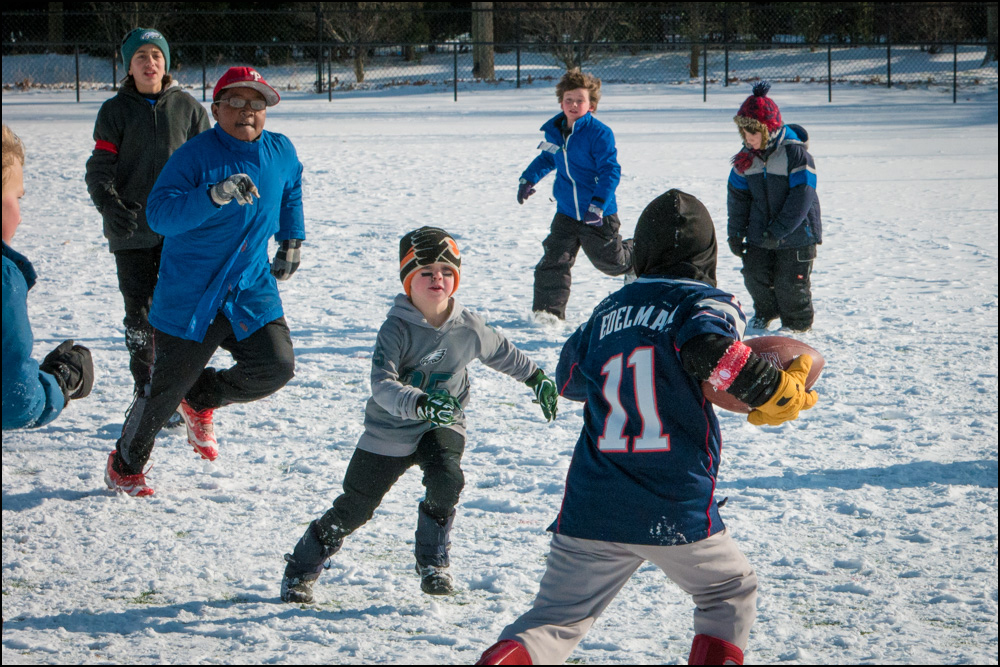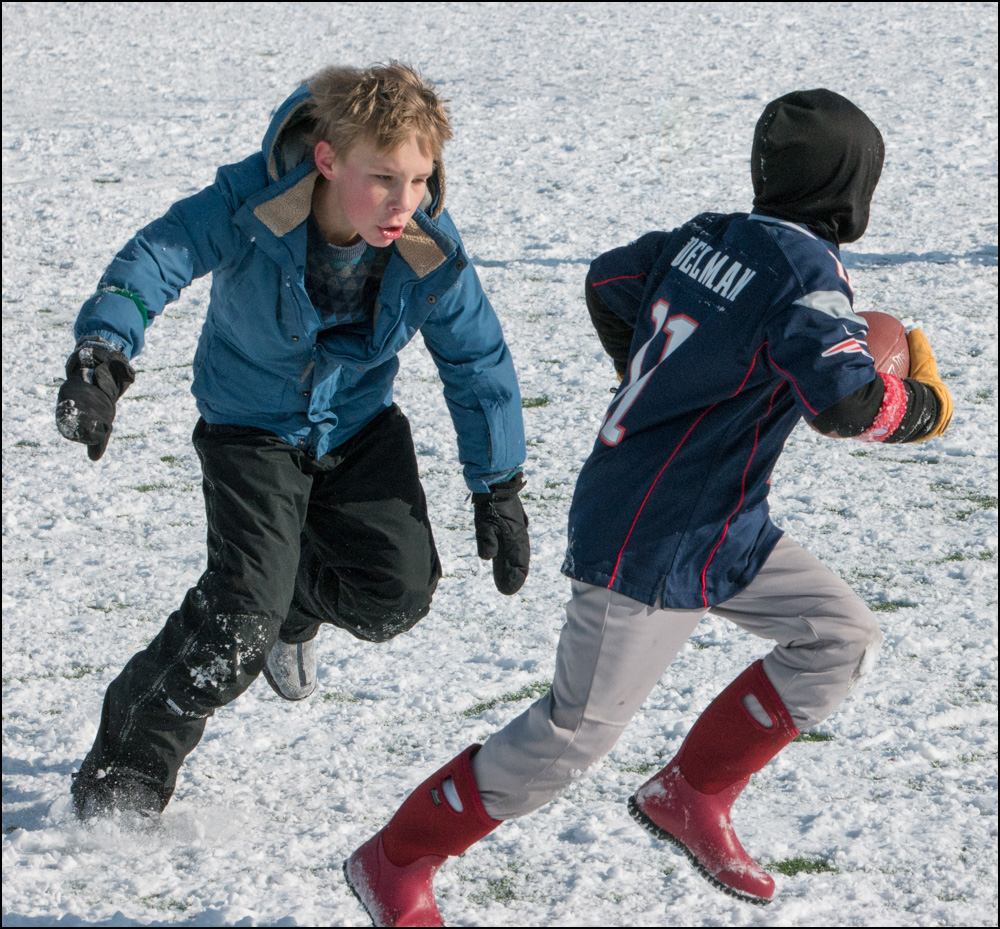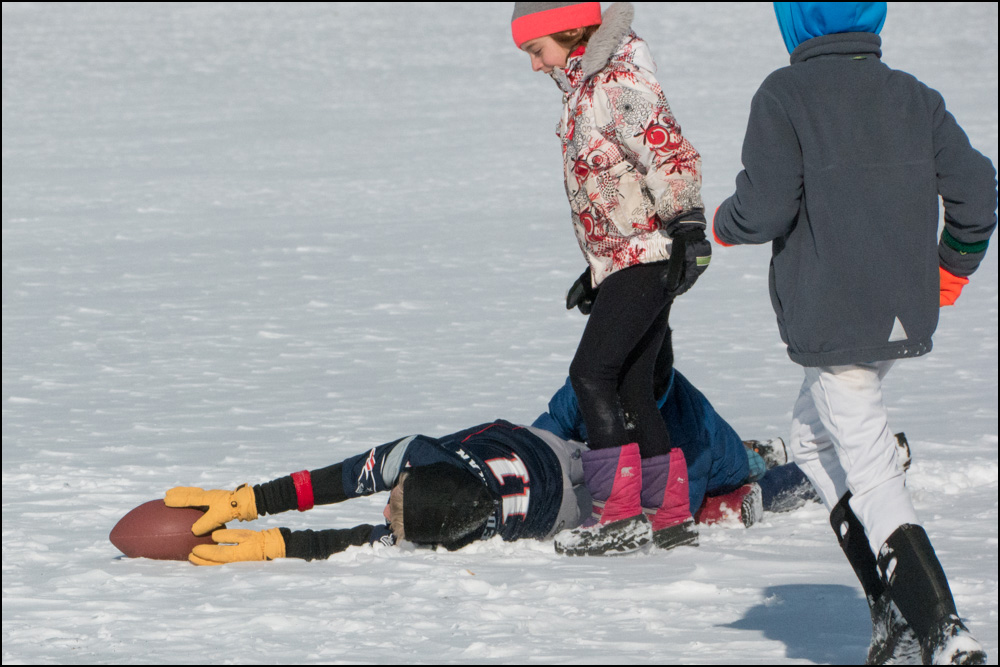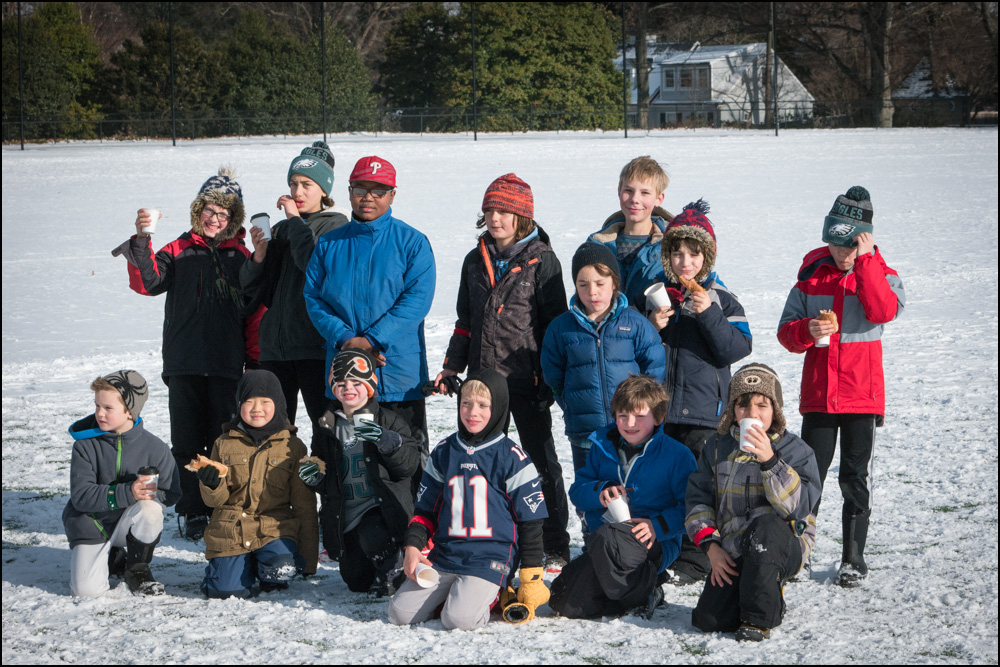It was actually his idea that this year we just skip the party and have a big football game and invite 16 boys to play. As it turns out, Philadelphia had just experienced enough snow to cover the ground and it was a bright sunny day. Really bright. Really, really bright.
Those conditions, blindingly bright reflections off of the ground, can present some challenges so let me walk you through how I attempted to solve them. I was quite proud of the results, if I do say so myself, considering that I could barely see anything that was happening through my camera. Trust me, I was flying by instruments here.
I don’t know if you’ve ever tried to use a digital camera on a bright bright day at the beach but it’s not completely user-friendly. That preview screen can be almost worthless. Trying to judge your exposure based on what you see on the preview screen can be a mistake actually.
So I decided to use all those fancy automatic camera settings that I paid so much money for and just let the camera work its magic. Let’s just say it out loud, I wanted to enjoy the game, too.
He was after all the birthday boy so I like the way it’s a group shot with only one face in it. He may not look at here, but he was so happy.
Here’s what went on in my brain camera wise:
I put my camera on the Aperture priority exposure setting. I then brightened up my exposure compensation by one f-stop because all of that bright white snow was inevitably going to make my pictures underexposed. (Yes, that’s right, UNDERexposed. Think about it. If your camera sees lots of bright stuff it’s going to try and make it darker.) Exposure compensation, for those of you that don’t know, is how you override the camera and still remain in automatic exposure. So I was telling my camera to overexpose what it thought was the correct exposure by one f-stop.
In the interest of helping my automatic focus camera take sharp pictures I put the aperture at F8. As much as I would like to think I could put backgrounds out of focus or any other shallow depth of field effect the players were going to be quite a distance from me and there was little chance of that. So I decided to give myself a bit of helpful depth of field by using F8 and that would just help keep things sharp in general. Mostly I wanted to have a nice set of photographs to send the parents after the game. I wanted lots of sharp faces. (Which I got, by the way, to rave reviews.)
I used my old standby friend, ISO 400. You kind of can’t go wrong with ISO 400 these days. (For what it’s worth, many of the world’s greatest news photographs have been taken at ISO 400 and F8.)
I also shot raw images which I do for everything that I shoot. Shooting raw covers up a lot of exposure and color mistakes and gives you more to work with in editing. As it turned out I really didn’t need that. My camera put on quite an impressive performance. Editing was a snap.
So with my camera set on automatic exposure ( Aperture priority) the camera automatically set my shutter speed for right around 4000th of a second. That’s an extremely fast shutter speed that would freeze action – pun intended. (The temperature was about 20° and it was very windy. It was a little challenging but I’d dressed for the almost arctic combat conditions.
I kept my back to the sun the old fashioned way just like it said on the little instruction sheet that came with rolls of film. In this particular case it was sound advice. If I had been shooting into the sun I would’ve had silhouetted football players against bright white snow. I wanted to see the people and their faces so I kept the sun to my back.
Honestly, what I really wanted to do was take some fun photographs that the boys and their parents would enjoy. I wanted as many sharp faces as possible. This picture was taken at F8 with a 200 mm lens. That little guy in the middle – our neighbor, the kindergartner, Parker – really knows how to hang in there with the big boys and they take good care of them.
The magic that I really wanted the camera to work was focusing. I pulled out all the stops. I put it on continuous focus and then I also turned on all of the focusing points on my Samsung NX1 which has somewhere around 50 focusing points. You may need to check your instruction manual on this one. Go to the section about photographing action and just turn on everything they suggest it might be helpful. THEN you’re going to need to practice and experiment. But this is a great way to find out how your camera just might be better at photographing action than you are doing it manually.
Continuous focusing and lots of focusing points is supposed to work some kind of photographic voodoo and track and anticipate motion which was exactly what I wanted it to do. In other words, I just wanted to point my camera at the game trying to keep the guy with the ball in the middle of the frame and hope that the pictures would be sharp. It was practically impossible to judge sharpness on the preview screen so I put complete faith in 21st century machinery.
It was also important that I get a good picture of Teddy’s, brother, Alexander. This is brother chasing brother, something that happens on and off the football field.
As you can see, the results were more than satisfying. I had sharp pictures of lots of different kids with proper exposure and some nice action and I didn’t think about it too much. If the entire system had failed it wouldn’t of been a complete heartbreaker. The game was very exciting and the boys had an absolute blast. We’ve been getting rave review emails and phone calls ever sense.
Although there were no first down markers on the field, the really good players – the ones in the know – were always stretching for those extra inches to put them over the line.
On a personal level, the most fun for me was that we hired our local and legendary neighborhood baseball umpire (who happens to be a physical education teacher at a nearby school) to referee the game. He put on a great show. He kept it fun and fair and sportsmanlike. One minute he was doing radio announcer play-by-play and the next he was explaining in intricacies of football rules.
The real highlight of the game for me was that we had the legendary Philadelphia baseball umpire, D.J., referee the game for us. He is adored by thousands of local parents and players.
Mom supplied the hot chocolate and hot dogs and dad shot the token group shot just to make sure that everybody got their picture taken. Teddy is already talking about next year.
And yes, sadly that’s a #11 Julius Edelman New England Patriots football jersey that Teddy is wearing. In Philadelphia that’s borderline treason. There is very little I can do to sway him. I thank my lucky stars that at least it’s not a Tom Brady jersey.

